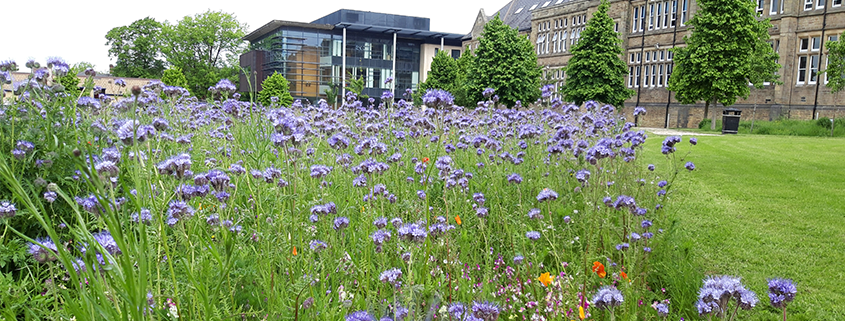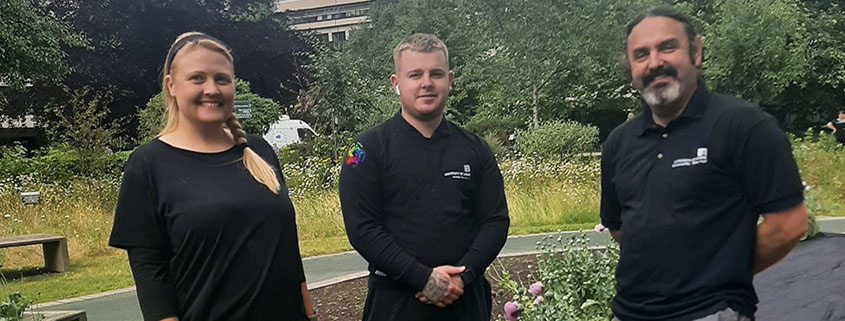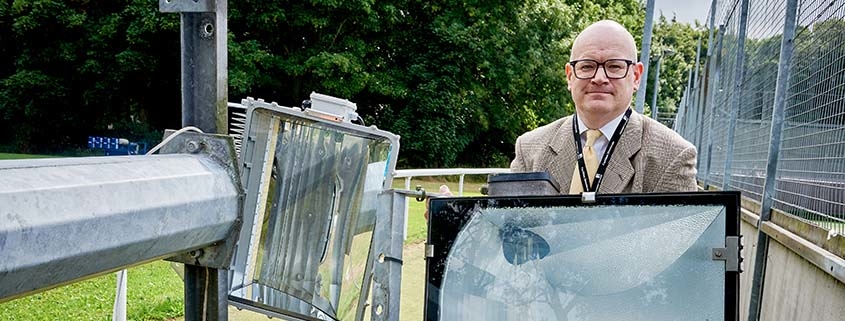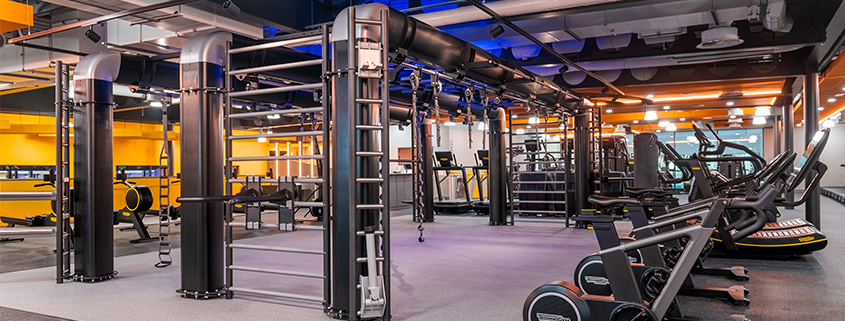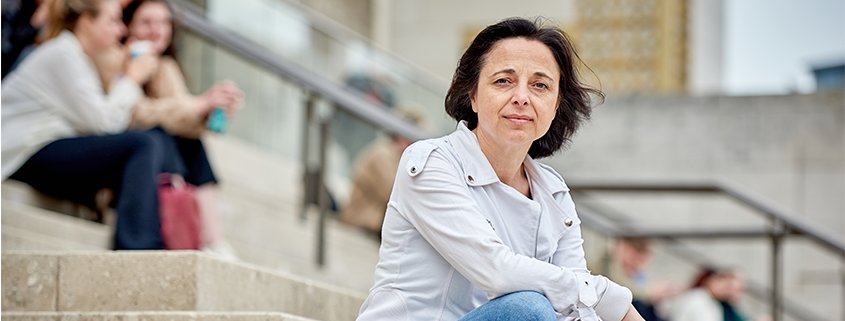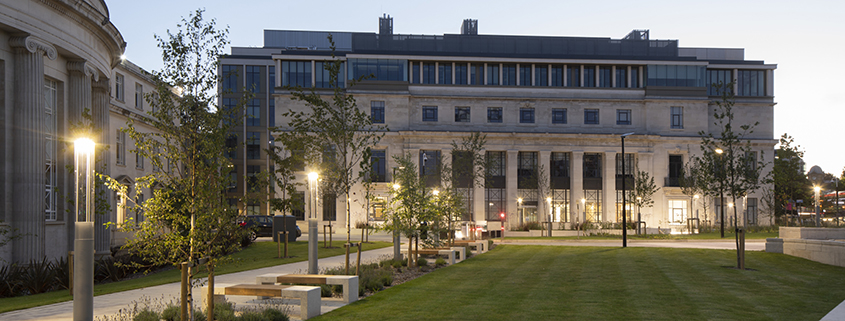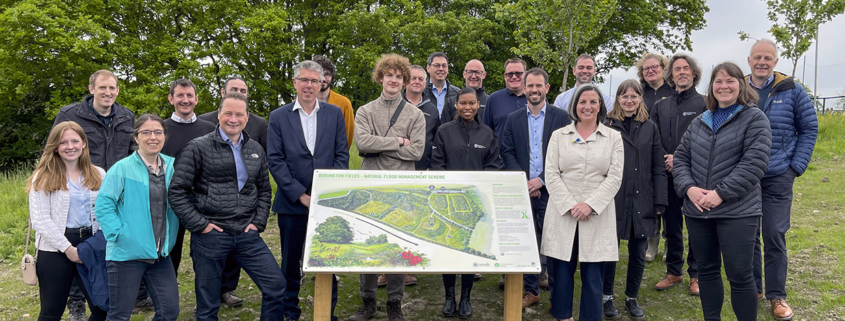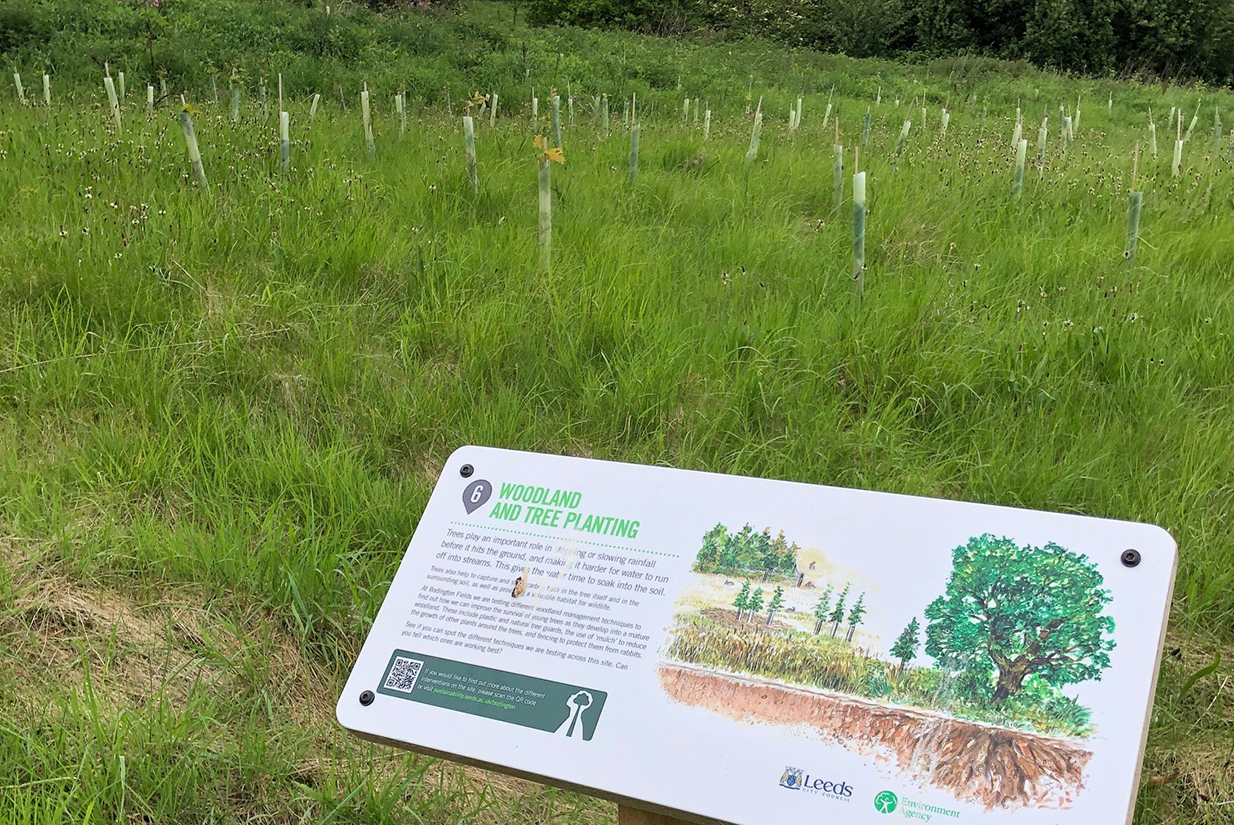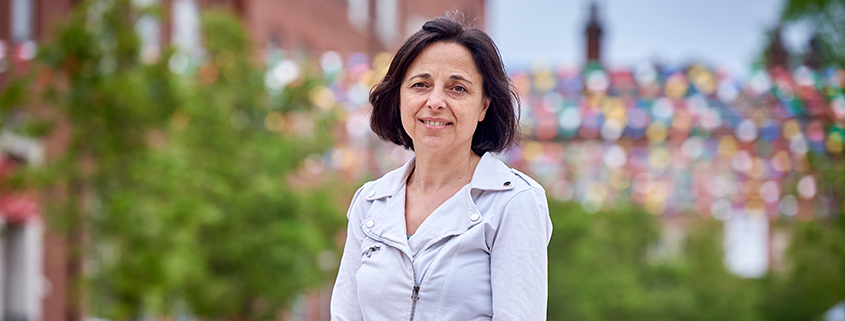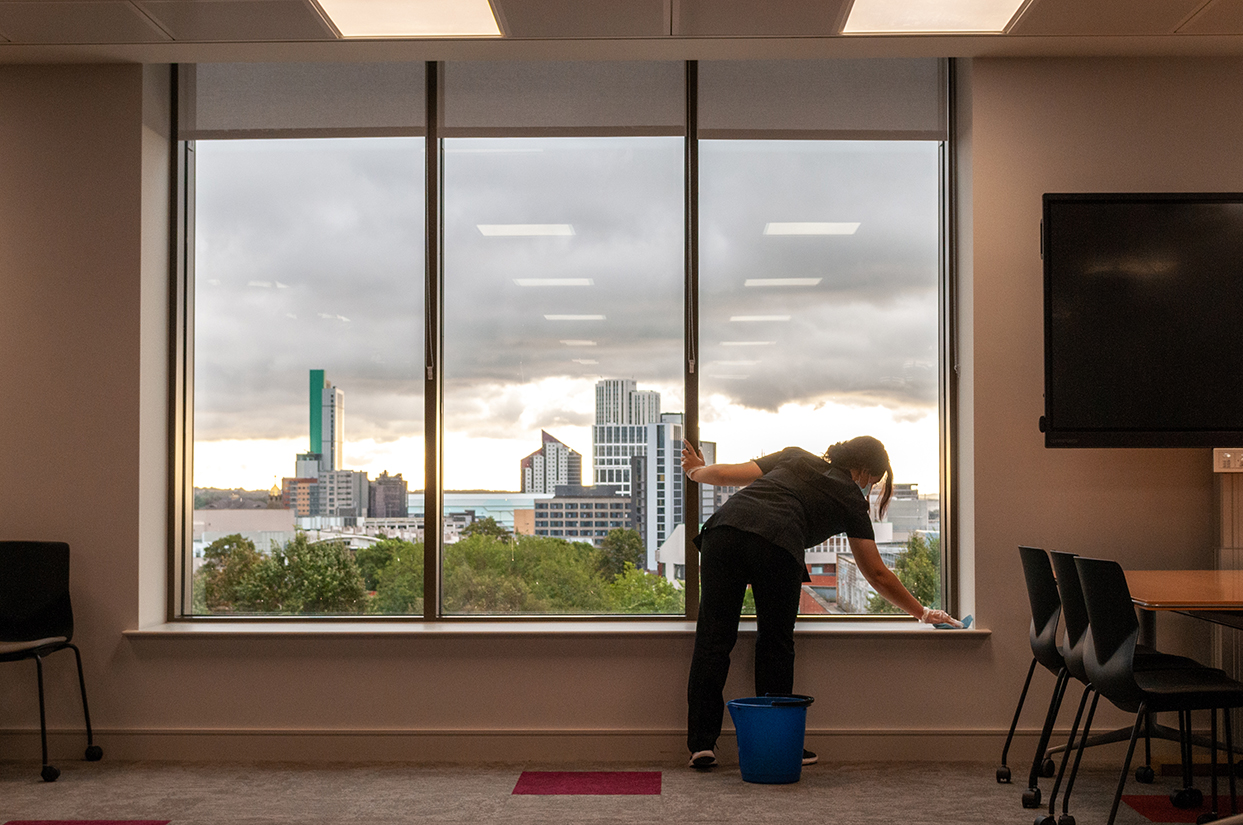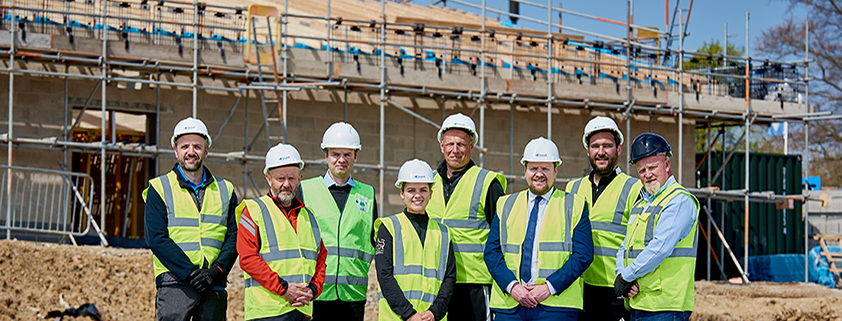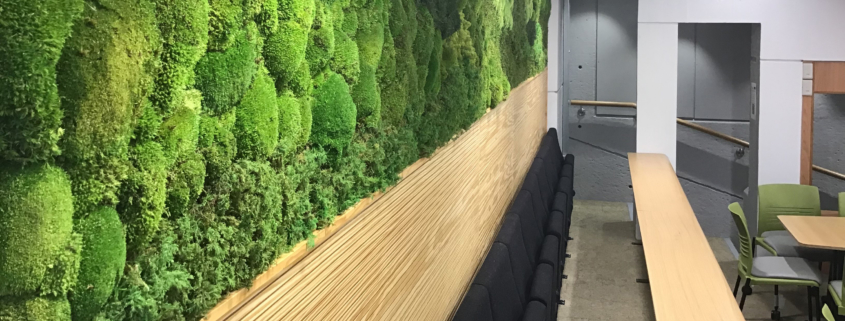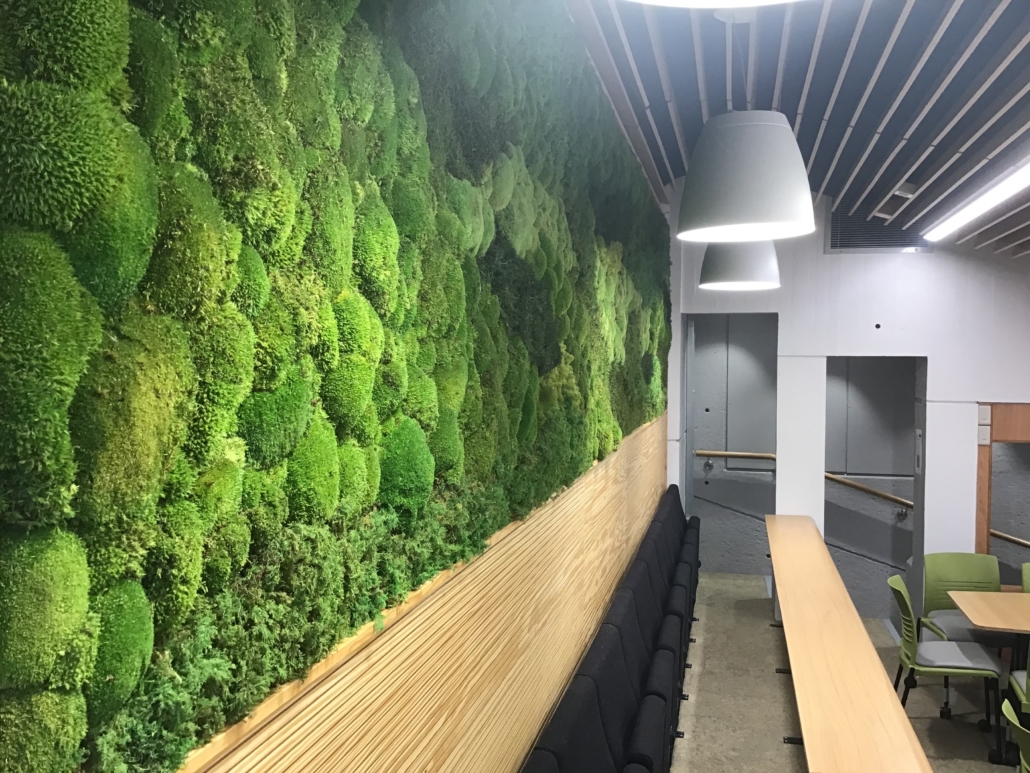Gold for University in Yorkshire in Bloom Awards
The University of Leeds has been awarded Gold status and is a category winner in the annual Yorkshire in Bloom Awards.
Judges from the regional body representing the Britain in Bloom campaign gave special mention to the University’s partnership working, particularly with students and staff. This includes work by the student biodiversity ambassadors, who map and create plans surrounding biodiversity on campus and within residences, and projects such as the North Hill Well Wood project, which was completed this year.
The accessibility of our gardens and the signs within them, our mature trees and the encouragement of biodiversity around campus, particularly at Roger Stevens Pond, were also singled out.
James Wright, Senior Maintenance Manager said:
“Our campus – at the heart of the city – is a haven for wildlife and contains plenty of spaces for staff, students and visitors to relax in.
“Our planting is carefully considered, and we are very pleased to achieve this recognition.”
Mike Leonard, Residential Property Manager, University of Leeds said:
“We are very grateful to Yorkshire in Bloom for this recognition of our work to create a welcoming and well-maintained campus.
“Collaboration is key to our success, working with teams in Estates, Residential and Sustainability Services, alongside students and external organisations such as Buglife; Yorkshire Wildlife Trust; Hedgehog-Friendly Campus and Groundwork Yorkshire, so we can make spaces that have a positive impact on wellbeing as well as the environment “
This is not the first time that the University of Leeds has received great results for Yorkshire in Bloom, winning gold awards in both 2017 and 2019.
Judges said:
“The most surprising element of visiting Leeds University campus is the ability to forget that you are in the centre of a major city whilst being surrounded by greenery and tranquillity.”
Find out more about our Grounds and Gardens Team


